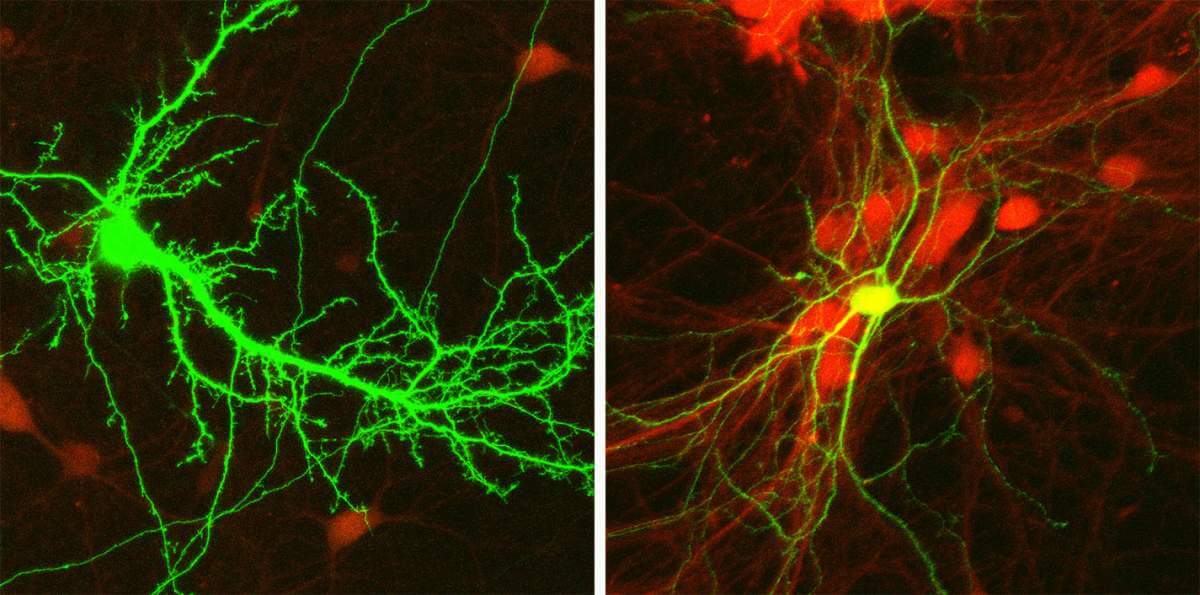Networks of nerve cells grown in the laboratory revealed a new regulatory mechanism that maintains a balance between activation and suppression of brain activity

Every activity in the cerebral cortex is built on networks of interconnected nerve cells that produce spontaneous electrical activity that does not necessarily depend on input from the outside world. Most of the cells in the network (about 80%) stimulate it to action and the small part (about 20%) suppress its activity. It is known that the balance between activation and suppression is critical to the normal functioning of the brain: epileptic seizures, for example, occur when this balance is violated; But until now it has not been possible to control in a controlled experiment the relationship between the activating and suppressing cells. In a new study thatBe famous In the scientific journal "Records of the American Academy of Sciences" (PNAS) revealed for the first time the scientists of the Weizmann Institute of Science, in collaboration with researchers from the University of Tübingen in Germany, how the delicate balance between suppression and activation is maintained through the regulation of connections between nerve cells in the brain.
Scientists from three fields of research collaborated in the research - the experimental physicist Prof. Elisha Moses from the Department of Physics of Complex Systems, and his two students, Nirit Soknik and Eyal Vinerev; Neuroscientist Prof. Menachem Segal from the Department of Neurobiology, and theoretical physicist Prof. Anna Levina from the University of Tübingen and her research student Oleg Vinogradov.
Suknik took nerve cells from a mouse brain and separated the excitatory ones from the suppressive ones, then re-grown them in grids with a precise ratio of suppressive to excitatory cells. Similar to the neurons in our brain, neurons in tissue culture communicate with each other even in the absence of external stimuli. This communication occurs in the form of network bursts of many nerve cells.
To examine how the ratio between the number of cells of each type affects the rate of bursts, the scientists gradually increased the relative proportion of suppressor neurons from 0 to 100%. When they compared the data obtained in the experiment to a mathematical model they created, they were surprised: "As long as the rate of suppressive neurons was between 10% and 90% - the rate of network activity did not change. Only when some of them fell below 10% or exceeded 90%, a change was registered in the network's activity," recalls Prof. Mozes.
In further experiments with individual cells, Prof. Segal discovered that the neurons compensated for the changes in the composition of the cells by reducing or increasing the number of connections between them: when the proportion of inhibitory neurons increased, the cells reduced the number of connections between cells, so that the balance between the activation and deactivation signals remained constant.
It is known that the connections between the nerve cells in our brain are constantly changing. Therefore, the scientists hypothesize that it is this mechanism that maintains a balance between activation and deactivation and allows the brain to function as required even if some of the excitatory or inhibitory neurons have been damaged or the intensity of their activity has changed.
Prof. Segal points out that the balance between activation and deactivation in the human brain changes not only in disease states, such as epilepsy or Parkinson's, but also following routine events, such as medical anesthesia, mental stress or excessive consumption of alcohol or coffee. "Maintaining balance is essential for the proper functioning of the brain, so it makes sense that it would have a powerful adaptive mechanism at its disposal that maintains the correct relationship between activation and suppression."
More of the topic in Hayadan:
